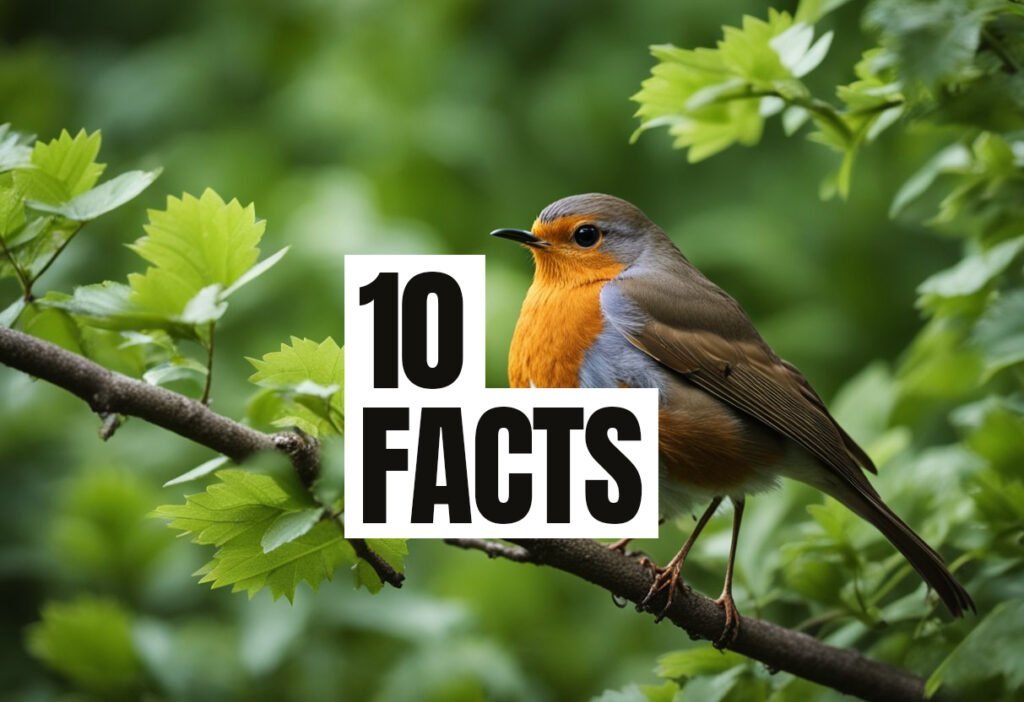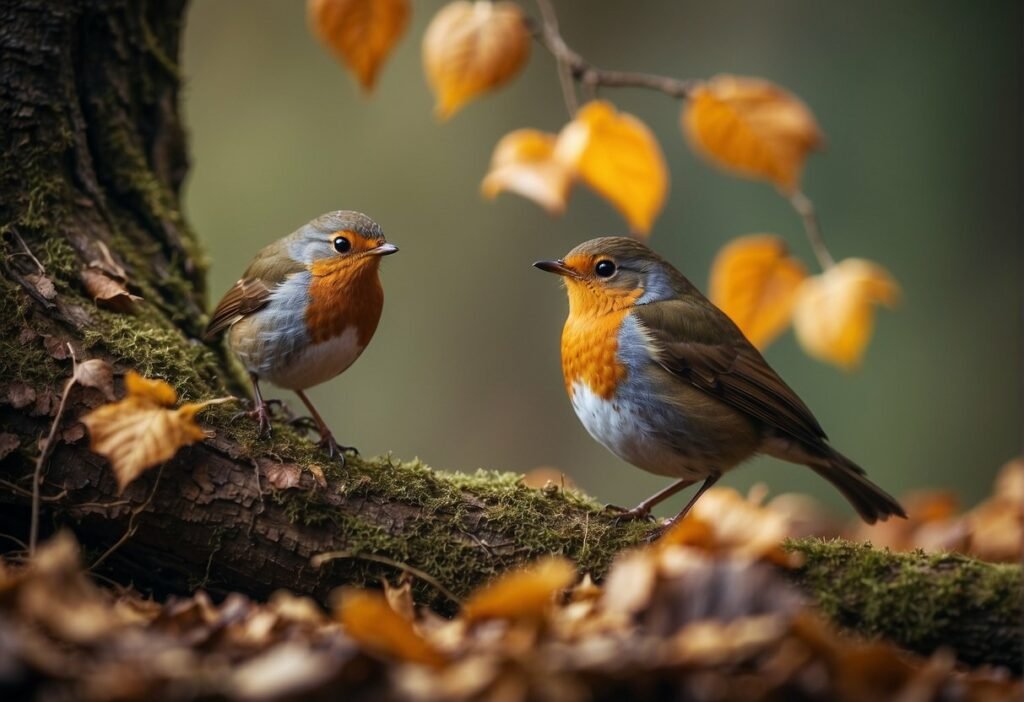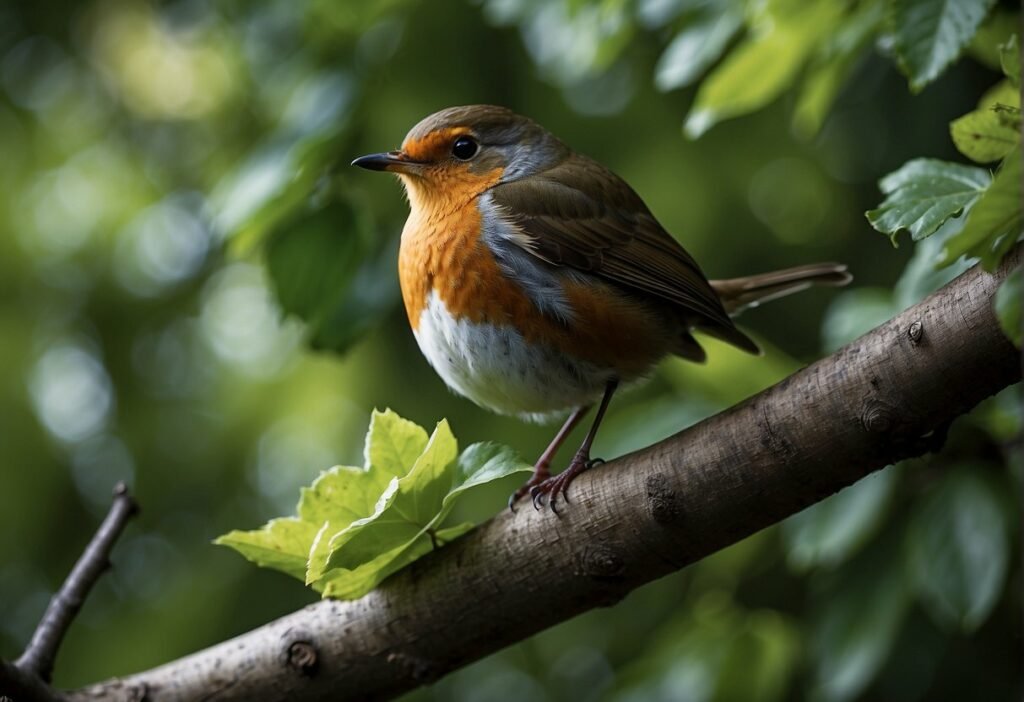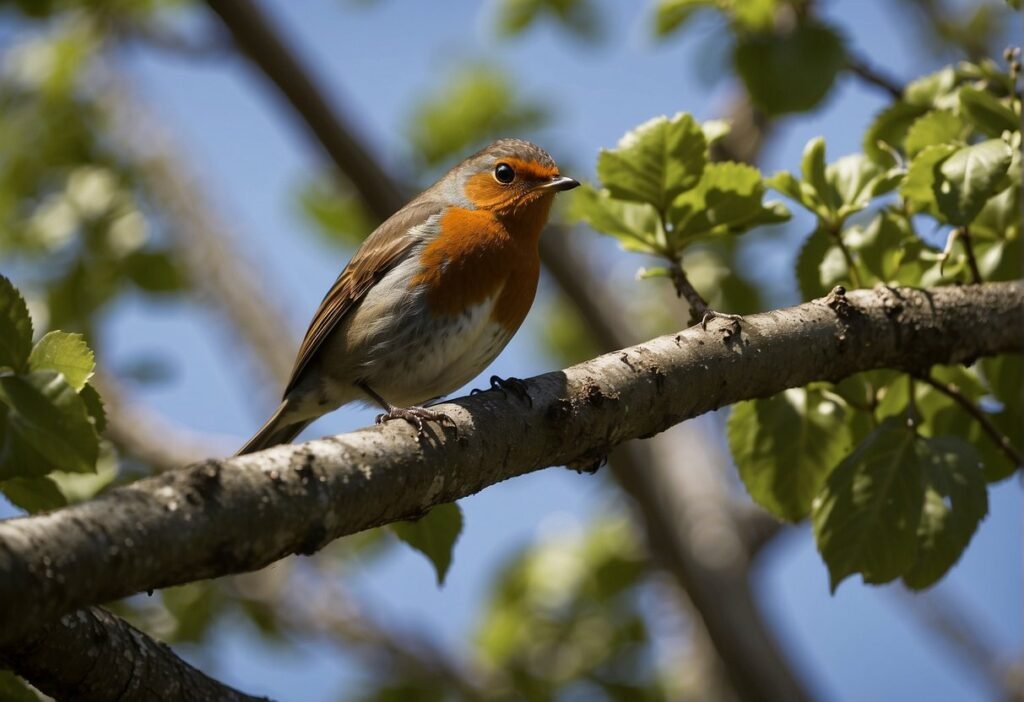Robins are a common sight in many gardens and parks, with their distinctive red breast and melodic song. But are these birds also territorial? The answer is a resounding yes. Robins are known to be one of the most territorial bird species in North America, fiercely defending their nesting sites and feeding areas against other robins and even other bird species.

During the breeding season, male robins will stake out a territory and defend it against all intruders. They will aggressively chase away other males and even attack their own reflection in windows or mirrors, mistaking it for a rival. Female robins are also territorial, but their aggression is typically directed towards other females who may be competing for the same nesting sites or food sources.
Despite their territorial nature, robins are also social birds and will often form loose flocks outside of breeding season. They may even tolerate other robins within their territory during the winter months when food is scarce. Overall, the territorial behavior of robins is an important part of their survival strategy, ensuring that they have access to the resources they need to raise their young and thrive in their environment.
Robin Behavior and Territoriality
Robins are one of the most common birds in North America, and they are also known for their territorial behavior. In this section, we will discuss the territorial habits of robins, including their defense mechanisms, mating, and nesting habits.
Territorial Defense Mechanisms
Male robins are known for their aggressive territorial behavior, especially during the breeding season. They are very protective of their nesting areas and will defend it against any intruders, including other male robins. They use a variety of defense mechanisms, including alarm calls, aggressive displays, and physical attacks.
When a male robin senses an intruder, it will first give an alarm call to warn its mate and offspring. If the intruder persists, the male will puff up its feathers, spread its wings, and hop towards the intruder in an attempt to intimidate it. If the intruder still does not back down, the male may physically attack it.
Mating and Nesting Habits
Robins are monogamous birds, meaning they mate with only one partner during the breeding season. The male robin will establish a territory and build a nest, usually in a tree or shrub. He will then use his singing to attract a female.
Once a female has chosen a mate, they will work together to build the nest. The female will lay a clutch of eggs, usually between three and five, and both parents will take turns incubating them. After the eggs hatch, the parents will continue to care for the young, including feeding them and protecting them from predators.
Robins may have multiple clutches of eggs during the breeding season, and they will often reuse the same nest. However, they will always defend their territory and nesting area against any potential threats.
In conclusion, robins are territorial birds, and their territorial behavior plays an important role in their mating and nesting habits. Male robins are especially protective of their nesting areas and will use a variety of defense mechanisms to protect their offspring.
Robins’ Habitat and Diet
Feeding Patterns and Diet
Robins are omnivorous birds that feed on a variety of food sources. During the breeding season, they primarily feed on insects such as grasshoppers, spiders, and snails. However, they also consume fruits such as berries and other small fruits. In the winter, when insects are scarce, they rely more on fruits, particularly those that are still on the tree or shrub. Robins also feed on earthworms, ants, and caterpillars.
Habitat Preferences and Migration
Robins are familiar birds in North America, particularly in the United States, Canada, and Alaska. They are members of the thrush family and are known by their scientific name Turdus migratorius. They prefer habitats with open lawns, trees, and shrubs. During breeding season, they build their nests in trees, usually on a branch or ledge. They construct their nests using twigs and mud.
Robins are migratory birds and travel to Mexico during the winter months. During migration, they form large flocks and can be seen in woodlands, parks, and near water. In the UK, they are a common garden visitor, and in Europe, they are represented by the European Robin.
Robins are territorial birds and defend their territories from predators such as jays, squirrels, and cats. They are also known to engage in conflicts with other robins over food sources and nest sites.
In terms of physical appearance, robins are characterized by their red breast and orange breast feathers, gray back, and brown wings. They are also known for their distinctive feeding behavior, which involves hopping on the ground while searching for food.
Overall, robins are adaptable birds that thrive in a variety of habitats and feed on a diverse range of food sources. Their migration patterns and territorial behavior make them an interesting species to observe and study.
Frequently Asked Questions
What types of behavior indicate territoriality in robins?
Robins are known to be very territorial birds, especially during the breeding season. Some behaviors that indicate territoriality in robins include singing loudly and persistently, chasing away other birds that enter their territory, and attacking other robins that try to take over their nesting site.
How do robins defend their territory from other birds?
Robins use various methods to defend their territory from other birds. They may engage in aggressive behaviors such as chasing, pecking, or attacking other birds that enter their territory. They may also use vocalizations to warn other birds to stay away.
Can human presence trigger aggression in robins?
Human presence alone is unlikely to trigger aggression in robins. However, if humans intrude on a robin’s nesting site or disturb their young, the robin may become aggressive and defend its territory.
What methods are effective for creating a robin-friendly feeder?
To create a robin-friendly feeder, use a platform feeder or a tray feeder with a low lip. Fill the feeder with mealworms, suet, and chopped fruit such as apples, berries, and grapes. Place the feeder in an open area with plenty of vegetation nearby for robins to perch and rest.
Which fruits are part of a robin’s diet?
Robins have a varied diet that includes fruits such as berries, apples, and grapes. They also eat insects, worms, and other small animals.
In what ways can having robins around be beneficial?
Robins are beneficial to the ecosystem as they help control insect populations and spread seeds through their droppings. They are also a joy to watch and listen to with their beautiful songs and colorful plumage.




